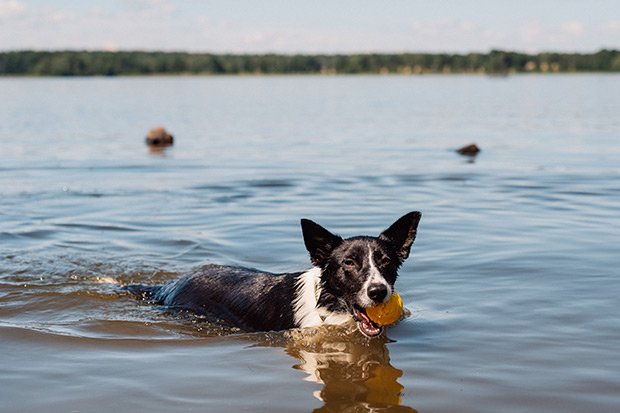Updated guidance on canine leptospirosis reflects better understanding of disease
All dogs are at risk of leptospirosis, no matter where they live, their breed or age, whether they mostly stay indoors, or the time of year, according to the most recent guidance on the disease. Given that every dog is at risk, an expert panel has recommended that all dogs are vaccinated for leptospirosis annually rather than every three years.
Late last year, the American College of Veterinary Internal Medicine (ACVIM) published an update to its 2010 consensus statement on leptospirosis in dogs. The revised guidance for veterinary practitioners incorporates more than a decade’s worth of new information about Leptospira spp, including the epidemiology and pathophysiology of the zoonosis since the statement’s release more than a decade ago.
The ACVIM statement touches on clinical and laboratory criteria to confirm leptospirosis in a dog; treatment options, including antimicrobial and extracorporeal kidney support therapies; supportive care; and prognosis. There is also guidance on vaccine protocols and public health implications, such as protecting veterinary staff from Leptospira infection.
Dr. Jane Sykes, lead author of the consensus statement and a professor of small animal medicine at the University of California-Davis School of Veterinary Medicine, provided an overview of the guidance document during a presentation at the 2024 Veterinary Meeting & Expo on January 16 in Orlando, Florida.
Disease risk
Rodents are the most important reservoir for Leptospira spp, especially rats, “in which a worldwide prevalence of infection of 30% has been identified, with prevalences exceeding 80% in some regions,” according to the statement. However, they are not the only source of infection. Spread through the urine or body fluid of an infected animal, the bacteria can survive in water or soil for weeks to months. Infections occur when Leptospira bacteria are brought into contact with skin abrasions or mucous membranes of human and animals, such as following ingestion of contaminated water or predation.
Dr. Sykes said increased rainfall in an area can allow leptospirosis to build up on substrates in the environment, especially muddy soil or water, likely because particulate matter allows it to build up as a biofilm.
“We know it does replicate in the environment, especially water-logged soil, and that’s important to its ability to persist in the environment,” she said, noting that the bacteria can survive freezing.
Human leptospirosis occurs primarily in subtropical climates such as those found in Sri Lanka, which has the highest number of human cases. Yet, as the ACVIM consensus statement explains, outbreaks of leptospirosis in dogs have been reported in regions with a large variety of climate conditions, including Arizona, Los Angeles, Chicago, and Wyoming. The recent appearance of outbreaks in association with boarding facilities has raised concern for dog-to-dog transmission or rodent infestations in such facilities, she said.
Leptospirosis is most commonly seen in the fall in the Northeast, wintertime or early spring in California, and year-round in the South. Regardless, the updated document says, “All dogs are at risk of leptospirosis, regardless of signalment, geographic location, lifestyle, and the time of year.”
Diagnosis and treatment
Although the most prominent signs of leptospirosis infection in dogs are acute tubulointerstitial nephritis and liver dysfunction, the disease is multisystemic and affects many other organs, the statement authors wrote.
This means it can range greatly in clinical presentation and affect various organs, including the pancreas (pancreatitis), heart (cardiac arrhythmias), eyes (uveitis, conjunctivitis, and retinal hemorrhage), and lungs (pulmonary hemorrhage).
Leptospirosis can be devastating if not addressed early, she added. When considering a diagnosis, the updated consensus statement says, “Because leptospirosis can progress rapidly to acute kidney injury (AKI), the disease should be considered in dogs with acute onset of febrile illness, especially if unvaccinated for leptospirosis. The owners of such dogs should be informed that clinical re-assessment and biochemical testing are recommended should their dog's condition fail to improve within 24 hours.”
The document goes on to say that specific diagnosis of leptospirosis should be based on clinical suspicion along with results of serologic assays and organism detection tests, including nucleic acid amplification tests (NAATs), because all available diagnostic tests have their own unique limitations.
“To optimize sensitivity of NAATs, specimens should be collected before administration of antibiotics. Also, both blood and urine should be submitted,” the updated statement says.
Dr. Sykes said artificial intelligence may also prove to be helpful in diagnosing the disease. She cited a study from the July 2022 issue of the Journal of Veterinary Diagnostic Investigation that showed machine-learning prediction models predicted leptospirosis with 100% sensitivity.
According to the statement, doxycycline treatment of acutely febrile dogs suspected to have leptospirosis based on history—lack of vaccination and other factors that raise suspicion for leptospirosis—could be considered, given the implications of delays in treatment on kidney function, “but more evidence is needed to support the latter recommendation to optimize antimicrobial stewardship.”
The statement goes further into nutritional management of dogs with suspected or confirmed leptospirosis as well as supportive care and monitoring.
“These dogs are prone to both fluid overload and dehydration, so it’s critical to closely monitor hydration status and adjust fluid rates accordingly,” Dr. Sykes said.
Other species
There is widespread serologic evidence of infection of domestic cats by Leptospira spp., Dr. Sykes said, but cats are considered disease resistant when compared with other animal species.
Pathogenic leptospires have been detected in the urine of up to 20% of apparently healthy cats using PCR and culture, and thus, cats may act as reservoir hosts, according to the ACVIM statement. However, other studies have shown lower prevalence of leptospires in the urine (0% to 5%), even in free-roaming cats.
“Cats may be an under-recognized source of pathogenic leptospires in some regions and should be considered in One Health investigations that employ sequence typing methods to advance knowledge of disease epidemiology,” the statement reads.
Leptospirosis is a quintessential One Health problem, Dr. Sykes said, explaining that the Leptospira spp bacteria can infect a wide variety of mammals. It has been estimated that the global burden of human leptospirosis is more than 1 million cases each year, and of those, roughly 60,000 are fatal, she added.
Dr. Sykes suspects the actual number of cases worldwide is much higher, however.
“Leptospirosis is a nonspecific illness with flulike symptoms and can resemble COVID, so the frequency of disease is likely to be much higher than the figures given,” she said.
That said, evidence suggests that getting leptospirosis from an infected dog is low as they don’t shed many organisms. For example, an investigation by the Centers for Disease Control and Prevention that examined people heavily exposed to dogs with leptospirosis during an outbreak in Arizona found no evidence of seroconversion.
ACVIM consensus
The revised consensus statement came about after the ACVIM Board of Regents voted in 2021 to approve revisiting the topic of leptospirosis in dogs.
After identification of core panelists, a multidisciplinary group of six experts from the fields of veterinary medicine, human medicine, and public health was assembled to vote on the recommendations. A draft was presented at the 2023 ACVIM Forum, and a written draft posted on the ACVIM website for comment by the membership before submission to the editors of the Journal of Veterinary Internal Medicine.
A version of this story appears in the May 2024 print issue of JAVMA
Read a paper written by Dr. Jane Sykes on the One Health perspective on leptospirosis that appeared in JAVMA. The AVMA also has resources for pet owners on leptospirosis.


